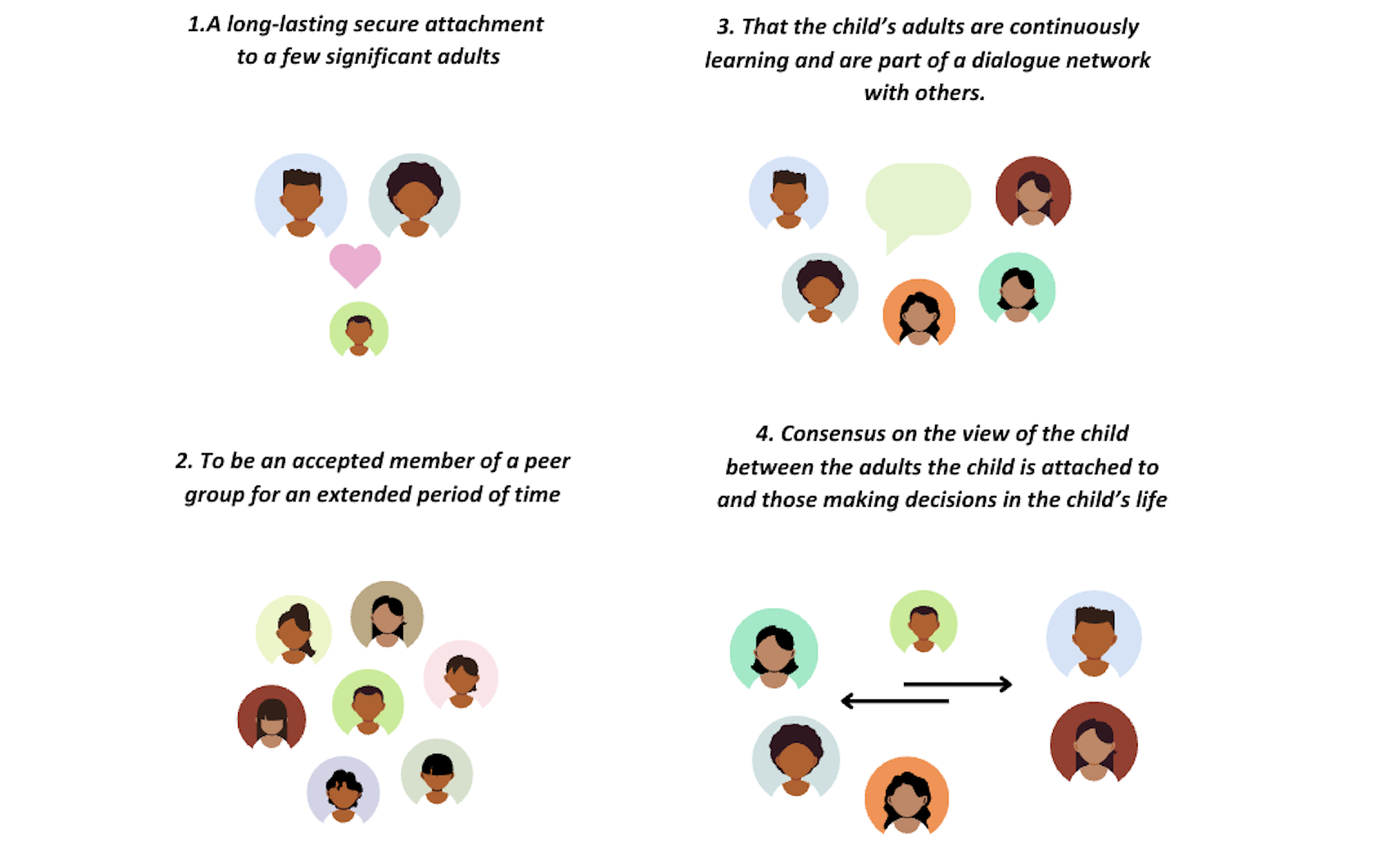Session 21/21
Page 2/6: Topic A - Introduction to reintegrationTopic A: Introduction to re-integration and family reunion
What does reintegration and family reunion mean?
For all NGOs and governments, these interagency guidelines define re-integration:
“The process of a separated child making what is anticipated to be a permanent transition back to his or her family and community (usually of origin), in order to receive protection and care and to find a sense of belonging and purpose in all spheres of life.”
In this session, we focus on understanding and planning family reunions with parents or relatives. Other ways of re-integration in the local community are:
- A child or youth can be placed with an SOS Parent in local foster care (this topic is covered in session 20).
- A young person can leave care and start independent living in the community (this topic is covered in sessions 14 and 15).
- A child can be legally adopted by a local family. This procedure is not used by SOSCV.

Why is the re-integration of children and youth a priority?
With the new SOSCV 2030 strategy for re-integration of children in society, a child-centred approach is applied. The strategy’s first priority is to ensure the child’s right to its cultural identity, family, and social network.
In the past, children and youth in the secure Villages were protected from the hazards of society and child abandonment. Their important emotional attachment was to their SOS Parent and to other children in their house. Thanks to Parents and teachers, these outcomes are extremely successful.
Why then, is re-integration needed? Even though the Village model improved child development for a small group of children, it did not strengthen the ability of local communities to care for all children. Also, SOS Parents and children were often isolated from their community. For young care leavers, reunion with relatives and life in society was a challenge after growing up in a secure space.
National Village Director Ethiopia, Sahlemariam Abebe, explains the new priority: “The numbers of children at risk are growing, due to climate change and other stressors. Instead of expensive solutions for a few isolated children, we must empower our society in general – even if this means somewhat lower standards per child”. To do so requires a difficult change of mindsets for all: “Today, parents-at -risk in society think the Village is the best solution for their child. SOS Mothers are nervous about moving out, and must adapt to the local culture and language. Children and young people are deeply attached to their mothers. They are naturally nervous about separating from their mothers and start living with their family of origin”.
Group Discussion 15 minutes:
- What are our first thoughts about re-integration?
- What benefits and challenges can we foresee in the process?
- Please agree on three items where you will need support from management.
What is a child-centred approach to family reunion?
A child-centred approach means that the voices of children and youth in care must heard in all phases, from preparations to living with relatives. They must be active participants with a genuine influence on all plans and decisions. In particular, they must have a say in replacing their emotional bonds with their SOS Mother and friends in the Village, to form new secure attachments with their relatives and neighbours. While in care, efforts must be made to trace and connect children’s relatives.

At 34 years of age, former Village child Eschalew is now a successful businessman. He still remembers the pain from the old Village practices where relatives were not allowed to visit him. Later, his family could only visit him for one hour a month. Tigist – who is now 25 – was younger, and enjoyed seeing her relatives all the time during her stay in the Village.
The four guiding principles of successful family reunion
In African and international research, the most important qualities of children’s relations and attachments to caregivers have been summarized. The more these qualities are fulfilled during childhood, the better the child’s success in adulthood – in education, daily skills, and ability to make social networks. The four principles can guide our work in the shift from Village life to reuniting with relatives. In the process, children need:
- A long-term emotional attachment to a caregiver, and help to shift to another.
- Become an accepted member in the new group of peers.
- The child and its caregivers must be active and informed participants.
- There must be agreement between those the child is attached to, and those who make decisions in its life: Managers, SOS Mothers, parents and relatives, school teachers, and community members.

Group Discussion 20 minutes:
- Please discuss: How can we apply these guidelines in our planning of re-integration?
